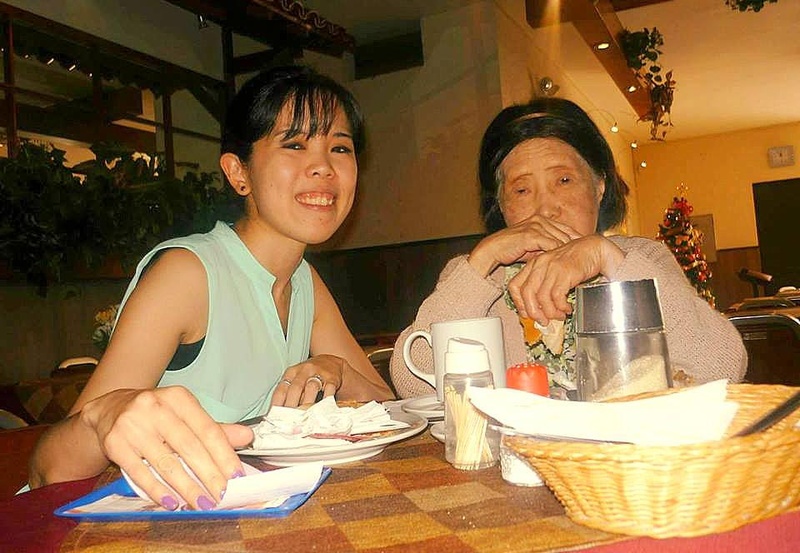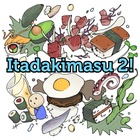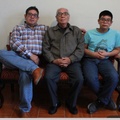“Eat it all, mottainai to throw it away.” Although two years have passed, I still miss my mother. “If you run out of ajinomoto, use shoyu (soy sauce) with sugar.” I still remember so many pieces of advice she gave me! “If you cook with tanchi, the food tastes bad.” My mom was always right. Food is prepared with love, without tanchi (being upset).
My mother wasn't openly affectionate and neither was my grandmother (oba). Both were widowed with small children in difficult times: my oba during the war (1944) and my mother during Peru's economic crisis (1985). Life was tough for them. I think that if they'd shown any weakness, we might not have gotten through those times.
So, how did they show their affection? A hug could be substituted with an “iko-iko” (obedient) and that was enough to make me happy. When she could, they bought us toys and clothing. They didn't want us to be deprived of anything, even if they didn't have enough for themselves. I believe they showed their affection in their own way, expressing it through silence and trying to make sure we were happy.
I remember that my mother woke up early, at the crack of dawn. That was almost every day. She turned on the little kerosene stove and prepared soy milk. I think it took her a couple of hours, between cooking and straining it by hand. Then she spent another two hours waiting for me to finish drinking it. At the time, I was only 4 years old and gas, milk, and other basic goods were scarce, but my mother always managed to think of something.
After breakfast, she got the stove going again. Now it was time to make lunch. She almost never made Japanese food. “Just local food,” my oba said. It was easier and less expensive. The sushi, kamaboko (fish cake), fried tofu, sanmainiku, or pancetta with shoyu and okashi (Japanese candies) were only enjoyed at Obon and Oshogatsu, when my mother and aunts literally shone in the kitchen. On regular days, I think the only Japanese food we could eat was juushiimee (rice with Okinawan vegetables), misoshiru (miso soup), tempura sweet potato, and okayu (rice porridge) when we had a stomach ache.
But there was one soup I didn't like. “Eat all of it, because it has a lot of calcium,” Mother said to get me to eat it. It was a soup made with squid ink, which gave it that characteristic black color. It's known as Kuri but I called it “black soup.” It tasted like the ocean, which was tolerable, but the color would put anyone off. She forced me to eat it, using my spoon with a little cartoon character, the “iko-iko” which I loved to hear, and even promises that she would buy me cookies if I ate it all. Then she would go upstairs to change and get ready for work. She worked at the family store until nighttime, while my oba stayed home and took care of us. Sometimes I fell asleep waiting for her. My mother came home tired, but she still got up early to cook and help us get ready. There was no time for hugs or games, not to mention time for herself. Now that I'm an adult, I've only recently realized how hard she worked during that time. And I often complained that she was never at home!
Among all my memories, there are many of my mother's pantry. I remember that she recycled containers and used them to store condiments, usually for Peruvian food. Among the jars of tuco, palillo, and achiote, there was a bag of katsuobushi (dried bonito for grating), which she bought at the Central Market.
In the drawers she kept Hondashi (bonito seasoning) and packages of wakame and kombu (seaweed). My mother treasured them like gold, because that's how she used them, on special occasions such as Obon, Oshogatsu, or Butsudan mass. Sometimes the package was too big for the few times we used them, and they expired. “Mottainai,” Mother said. We had to wait for a relative to send us a package or come back from Japan with omiyage (gifts), bringing us more Hondashi, kombu, nori (seaweed) and even Seirogan stomach pills and senko (incense), which was often used at our house. At the time, you could only get Japanese products through gifts or omiyage brought by relatives from Japan. There were practically no Japanese imports in Peru and what was there was very expensive.
Now things have changed. In the area where I live, there are many Nikkei families and businesses, and even supermarkets offer products for a variety of tastes, including Japanese food. I can find ramen (ramen-ya) restaurants, which have opened recently in my neighborhood, or go to the market to buy Hondashi or wakame, if I want to cook at home. Or if I'm feeling lazy, I can even call a delivery service to bring me obento (Japanese take-out food). Everything is much easier now and within reach, and I don't have to wait for a special occasion to eat Japanese food as we did in my mother's time.
If my mother were still with me, I would have liked to take her to those restaurants, to indulge her. At home, I'd make her a hot misoshiru and delicious jushimee with ingredients from the corner market. Anything to see her happy and tell her "I love you" without saying a word, just as she did with me.
A brief memory in honor of my mother, in her birthday month (August).
Notes:
1. Mottainai: an expression that means "What a waste!"
2. Obon: Three-day celebration to honor the memory of the dead; many believe that their spirits visit the living during that period.
3. Oshogatsu: New Year
© 2017 Milagros Tsukayama Shinzato







